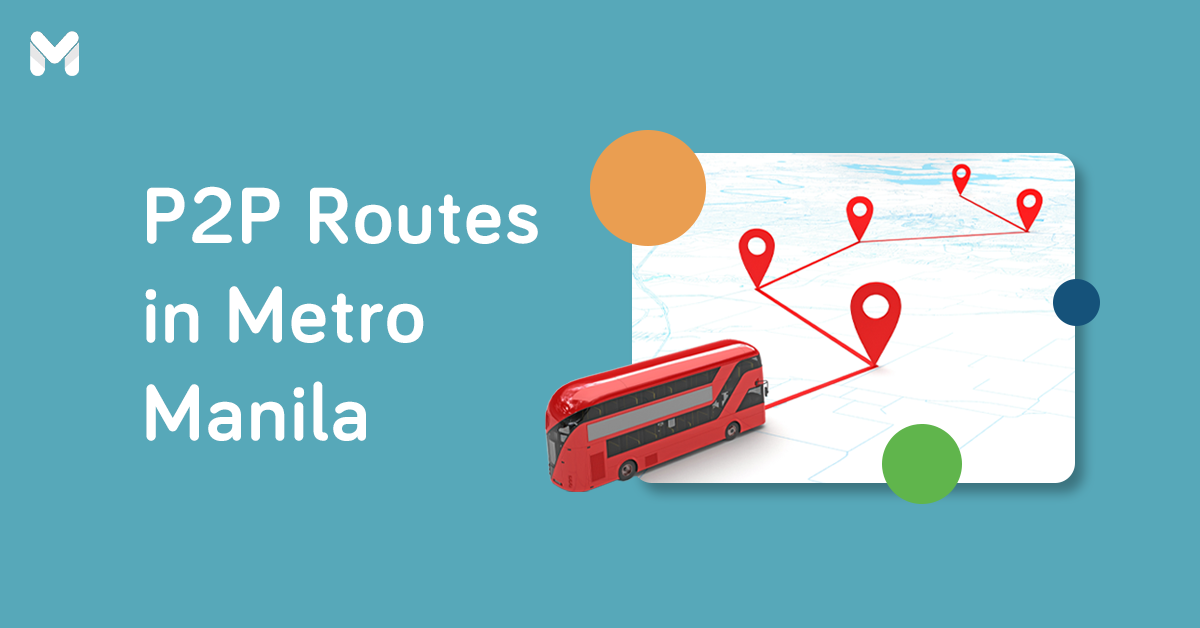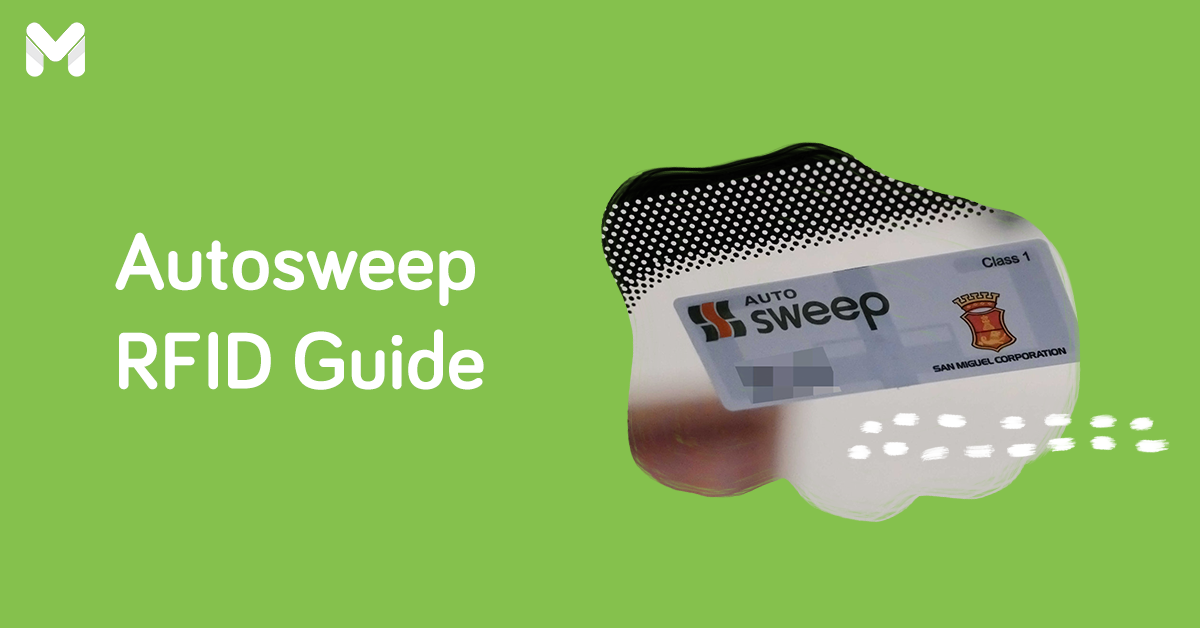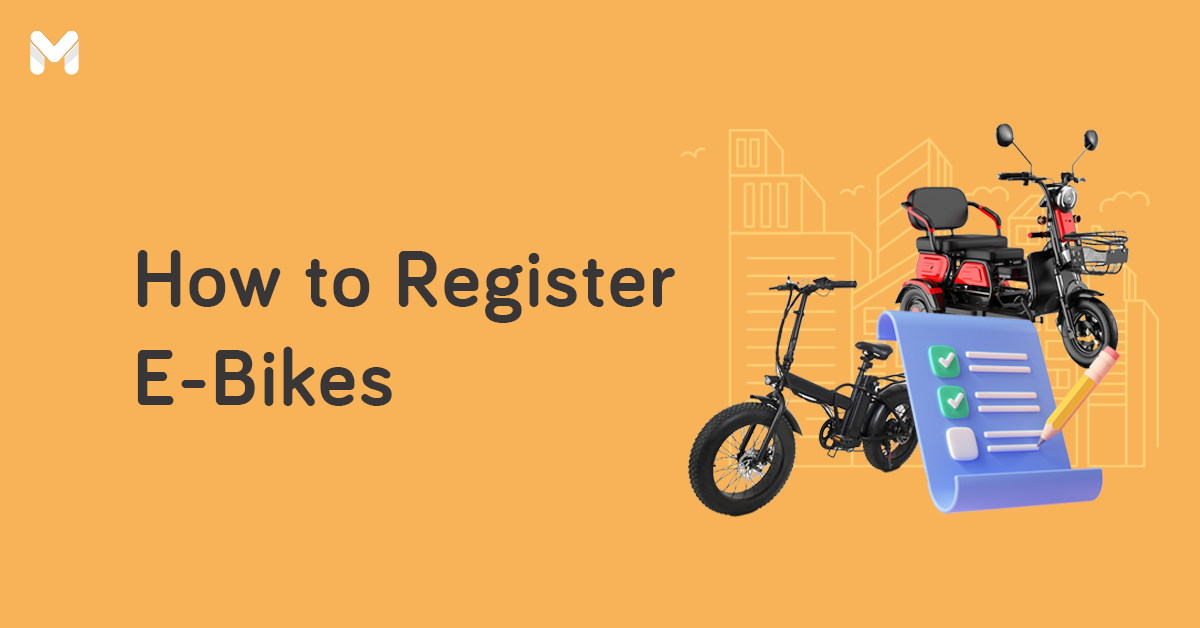Saying that driving around the metro is an arduous task is like saying the sun is hot. It's impossible to go out without getting stuck in a sea of cars.
As such, plan your trips wisely. Before you hit the road, make sure to check whether your ride is coded or not.
Confused about the latest number coding rules? Can't clearly remember the coding schedule or window hours? We got you! Here's a quick refresher on number coding in Metro Manila.
What is Number Coding in Metro Manila?
The number coding scheme (also called the Modified Unified Vehicular Volume Reduction Program or UVVRP) is a traffic management strategy for reducing the number of cars—and ultimately easing congestion—on the road.
The Metro Manila Development Authority (MMDA) implements number coding in Metro Manila. Through this scheme, traffic volume is expected to be reduced by 20% during morning and afternoon/evening peak hours.
What Time is the MMDA Number Coding Scheme?
Until what time is coding and when does it start? The expanded number coding scheme in the National Capital Region (NCR) is implemented during rush hours in the morning (7 a.m. to 10 a.m.) and afternoon to evening (5 p.m. to 8 p.m.) from Monday to Friday.
Number coding implementation is suspended, however, during holidays and weekends.
The MMDA's expanded number coding scheme[1] primarily covers private vehicles. The last digit of your vehicle’s plate number will determine the day of the week when you’re not allowed to hit the roads in Metro Manila.
Check out this handy guide so that you can plan your trip accordingly.

For example, if your license plate number ends in 0, you can't drive your vehicle on Fridays along EDSA and other major roads in Metro Manila where the coding scheme is enforced. Otherwise, you’ll be apprehended, ticketed, and required to pay the penalty fee for UVVRP violation.
Where Does Number Coding Apply in the Philippines?
Wondering if there's coding in major roads such as EDSA and SLEX, or busy cities such as Manila and Pasay?
According to the MMDA, number coding in the Philippines covers all cities and towns within Metro Manila. However, Makati City is excluded from the program since it has its own traffic code. Makati implements its number coding scheme from 7 a.m. to 7 p.m.
All the following major roads in cities under the jurisdiction of the MMDA shall follow the number coding scheme:
- EDSA
- C5
- Recto Avenue
- Quirino Avenue
- Araneta Avenue
- C6
- Roxas Boulevard
- Taft Avenue
- South Luzon Expressway (SLEX)
- Shaw Boulevard
- Ortigas Avenue
- Bonifacio Avenue
- Rizal Avenue
- Quezon Avenue
- Marcos Highway
- Del Pan
- Magsaysay Boulevard
- Aurora Boulevard

Each city may have its own traffic rules and number coding ordinances on secondary roads in NCR. Before you drive, check with your local government about your city’s number coding scheme and related traffic rules.
📍 Manila
Do you frequently travel to Manila? Manila is one of the most densely populated cities and has one of the busiest roads in the Philippines. Most roads here follow the number coding hours of 7 a.m. to 10 a.m. and 5 p.m. to 8 p.m. Some roads, though, don’t have window hours.
📍 Makati
Number coding in Makati applies from 7 a.m. to 7 p.m. There are no window hours if you travel in your coded vehicle. Violators will be slapped with a ₱300 fine.
The only exemptions are vehicles transporting drivers or passengers who are senior citizen Blu Card holders or those involved in medical emergencies and official duties.
📍 Pasig
Is your office in Pasig, or will you be running errands there? The number coding in Pasig follows MMDA’s coding scheme. It means number coding applies from 7 a.m. to 10 a.m. and 5 p.m. to 8 p.m.
📍 Pasay
There’s also number coding in Pasay, which starts from 7 a.m. to 10 a.m. and 5 p.m. to 8 p.m. However, some major roads are exempted from the number coding scheme, including Sales Road, MIA Road, Ninoy Aquino Avenue, and Domestic Road. It also includes some areas of Airport Road and Gil Puyat.
📍 Taguig
Is there a number coding in Taguig? It’s not implemented in BGC if that’s what you’re asking. But number coding is implemented in certain areas, particularly national roads, like the East Service Road and Manuel L. Quezon Avenue.
📍 Quezon City
Quezon City also follows the MMDA number coding schedule: 7 a.m. to 10 a.m. and 5 p.m. to 8 p.m. This means you can still travel in Quezon City on your coded vehicle in the window hours of 10:01 a.m. to 4:59 p.m.
📍 Marikina
There’s no number coding in Marikina. But a portion of Marcos Highway near Sta. Lucia East Mall and Ayala Malls Feliz is covered by the number coding scheme. If you have a coded vehicle, avoid the route from 7 a.m. to 10 a.m. and 5 p.m. to 8 p.m.
📍 Muntinlupa
The number coding scheme in Muntinlupa applies only to Ayala-Alabang National Road and Alabang-Zapote Road corner Buencamino and North Gate, from 7 a.m. to 10 a.m. and 5 p.m. to 8 p.m. Number coding is not implemented along Commerce Avenue.
📍 Mandaluyong
Heading to Mandaluyong? Check your coding day first, as the city implements the MMDA's number coding scheme. To avoid the fines, travel only during the window hours of 10:01 a.m. to 4:49 p.m.
📍 Caloocan
The city of Caloocan also follows the number coding system from 7 a.m. to 10 a.m. and 5 p.m. to 8 p.m., except for Samson Road, which has no window hours.
🚗 Get a Free Car Insurance Quote via Moneymax
Done checking the number coding in Metro Manila? Before you head out, make sure you’re protected with comprehensive car insurance coverage.
Compare your options, get a free quote in minutes, and apply directly via Moneymax!
| Car Insurance Company | Maximum Total Sum Insured | CTPL Coverage | Own Damage & Theft Coverage | Acts of Nature Coverage | Death / Disablement Coverage |
|
FPG Insurance
|
₱4 million
|
✔️
|
✔️
|
✔️
|
|
|
Malayan Insurance
|
₱7.5 million
|
✔️
|
✔️
|
✔️
|
|
|
The Mercantile Insurance Corporation
|
₱5 million
|
✔️
|
✔️
|
||
|
OONA Insurance (formerly MAPFRE)
 |
₱5 million
|
✔️
|
✔️
|
✔️
|
✔️
|
|
PGA Insurance
 |
₱3 million
|
✔️
|
|||
|
SGI Philippines
|
₱5 million
|
✔️
|
✔️
|
✔️
|
|
|
Standard Insurance
|
₱5 million
|
✔️
|
✔️
|
✔️
|
✔️
|
|
Stronghold Insurance
|
₱3 million
|
✔️
|
Number Coding in Metro Manila: FAQs
The number coding scheme can be confusing, and you might have a lot of questions and concerns about it. This section seeks to answer some of your queries.
1. Is there a new number coding scheme in Metro Manila?
The current expanded coding scheme has been implemented since August 15, 2022. The MMDA has not made any changes to it since then.
The government agency denied rumors on social media that cars would be banned along major roads in Metro Manila twice a week. This is false news, according to the MMDA, which maintained that the coding time is still from 7 to 10 a.m. and from 5 to 8 p.m. on weekdays.[2]
2. What are the number coding window hours in 2025?
The window hour refers to any time within the seven hours from 10 a.m. to 5 p.m. when coded vehicles (those covered by number coding on a particular day) are allowed to use public roads.
3. Is there a number coding in Metro Manila on holidays and weekends?

Coding days in NCR and nearby cities are usually suspended during regular holidays and weekends.
The MMDA also announces the number coding suspension during calamities (typhoons, volcanic eruptions, etc.). It may even lift number coding during public transport failures, like nationwide transport strikes or temporary closures of MRT/LRT lines.
Coding may also be lifted on the day of the president's State of the Nation Address (SONA). On July 24, 2023, for instance, the MMDA suspended the expanded number coding scheme in line with President Ferdinand Marcos Jr.'s SONA.
4. What kinds of vehicles are exempted from the number coding scheme?
According to the MMDA, the vehicles exempted from the number coding scheme include the following:
- Public utility vehicles or PUVs
- Transport network vehicle services (TNVS)
- Motorcycles
- Garbage trucks
- Ambulances
- Fire trucks
- Marked government vehicles
- Motor vehicles that carry essential and/or perishable goods
Take note that this number coding exemption doesn't apply to Makati City, according to the MMDA.
Read more: Vehicle Coding Exemptions in the Philippines That Motorists Should Know
5. Are all electric and hybrid cars exempted from number coding?

Not all—mild hybrids are not exempted from the MMDA's number coding. Plus, they can't park in parking spots designated for electric vehicles.
Check out the Department of Energy (DOE)'s list of recognized EVs, which can enjoy exemptions from coding.[3]
6. Are senior citizens exempted from number coding in Metro Manila?
There are no coding exemptions for senior citizens under the expanded number coding scheme. However, senior citizens are exempted from number coding in Makati as long as they are a resident, have a senior citizen card, or are registered Makati voters.
Currently, the MMDA plans to study the feasibility of exempting seniors from the coding scheme.[4]
7. Are healthcare and medical workers part of the coding exemption in the Philippines?
No. Medical and healthcare workers are not exempted from number coding in Metro Manila, which means they still need to travel using their coded vehicles during the number coding window hours.
This doesn't include healthcare and medical workers under medical emergencies in Makati City.
8. Can I apply for a number coding exemption?
No. The MMDA doesn't issue a number coding exemption. Only the vehicles in the exempted list will be exempted from number coding in Metro Manila. You may check with your local government unit for number coding exemptions and requirements in your area.
9. What is Makati's traffic reduction program?

Makati City’s coding scheme is different from the rest of Metro Manila’s. In Makati, drivers can’t drive coded vehicles around the city from 7 a.m. to 7 p.m.[5] As mentioned, there are no window hours.
However, the Makati City Government says that the coding scheme is automatically lifted on holidays.
Also, the only exemptions to Makati's number coding scheme are cars with Senior Citizen Blu Card holders as drivers or passengers, plus motorists under official functions and medical emergencies (as stated in the Makati Traffic Code).
Read more: [INFOGRAPHIC] A Guide to Driving in Makati
10. What is the penalty for number coding violations?
In case you get caught violating the number coding scheme, you’ll need to pay a ₱500 fine,[6] according to the single ticketing system of the Metro Manila Traffic Code.
11. Where can I pay the fine for my number coding violation?
If you're wondering how you're supposed to settle the fine for your number coding scheme violation, the MMDA has a list of payment channels to choose from, including the following:
- MMDA Traffic Management Division
- Landbank Link Biz Portal
- Bayad Center
- SM Bills Payment
- Maya
- GCash
- GrabPay
12. Is the truck ban on major roads in Metro Manila still suspended?
Yes. The total truck ban on Metro Manila roads remains suspended until further notice except along EDSA from Magallanes, Makati to North Avenue, Quezon City[7] and the following areas:
- Makati Business District
- Ortigas Business District, Pasig City
- Bonifacio Global City, Taguig City
- Navotas City[8]
Like the number coding scheme, truck ban exemptions include garbage trucks, fuel trucks, and trucks carrying essential and/or perishable goods.
If you violate the total truck ban policy, you’ll have to pay a ₱2,000 fine (₱5,000 if the truck ban violation is in Navotas). If you get apprehended three times for truck ban violations, the MMDA will recommend a one-year suspension of your driver's license to the Land Transportation Office (LTO).
How to Survive Number Coding in Metro Manila
Truth be told, the number coding system is a hassle for a lot of vehicle owners, especially if they travel long distances from, to, and within the metro. Follow these handy tips to survive coding days:
🚗 Leave Earlier
Since the number coding scheme targets afternoon and evening hours, you can still use your vehicle in the morning. If you have a trip in the afternoon, leave the house earlier than usual.
Make sure you have a buffer for traffic jams so you won’t be caught within the targeted times. On the other hand, if you’re leaving in the evening, hit the road a few minutes after 8 p.m.
🚗 Book Your Ride Using a Ride-Hailing App

Since TNVS vehicles are exempted from the number coding scheme, you can simply book your ride. One upside is that you can enjoy a private and comfortable ride without driving.
However, you must anticipate the competition, especially if you live in or travel within central business districts. Allot some time to book your ride so you won't be late for your appointments.
🚗 Consider Carpooling
Sometimes, it's more sensible to join a carpool than to book a TNVS ride. You can save money, especially if the vehicle owner doesn’t charge that much. Join Facebook groups where you can find a car owner who schedules carpools near your location.
If you don't feel like joining strangers, ask a family member, neighbor, close friend, or colleague to initiate this. In turn, offer your ride when the number coding scheme covers their vehicle.
Related reading: Carpooling in the Philippines: Weighing the Pros and Cons
🚗 Use Other Transportation Modes
There are other options that will take you from point A to point B. Why not walk or ride your bike if the destination is not that far? Your trip will also double as an exercise.
You may also choose to use your e-bike. However, remember that e-bikes and e-scooters are not allowed in major thoroughfares. Plus, you’ll need to register them and wear protective equipment, such as a helmet.
Final Thoughts
Before you step out of the house and take your car out for a spin, make sure to review the number coding in Metro Manila.
You may think this is a band-aid solution, which, in great part, it is. But knowing the rules will spare you the headache, stress, and money due to being caught and fined by the authorities.
💳 Get Fuel Rebates, Discounts, and More with a Credit Card
Save money on car-related expenses like fuel when you charge them to a credit card. Check out these top recommendations to maximize your benefits with every swipe!
| Credit Card | Features and Benefits |
|
UnionBank Platinum Mastercard
|
|
|
HSBC Red Mastercard
|
|
|
Security Bank Complete Cashback Mastercard
|
|
|
Petron BPI Card
|
|
Sources:
- [1] MMDA to start expanding number coding (Inquirer.net, August 2022)
- [2] MMDA: No changes in number coding (Philstar.com, April 2023)
- [3] Be Informed: DOE Updated List of Recognized EVs (Department of Energy Philippines on Facebook, 2023)
- [4] MMDA to study seniors’ number coding exemption (Inquirer, 2024)
- [5] "Normal" Number Coding Scheme Back in Makati Starting March 16 (Inquirer.net, 2022)
- [6] What you need to know about single ticketing system (Rappler, 2023)
- [7] Truck Ban Ordinance Updated FAQ (MMDA, 2022)
- [8] Navotas to reimplement truck ban starting Nov. 14 (Manila Bulletin, 2022)













